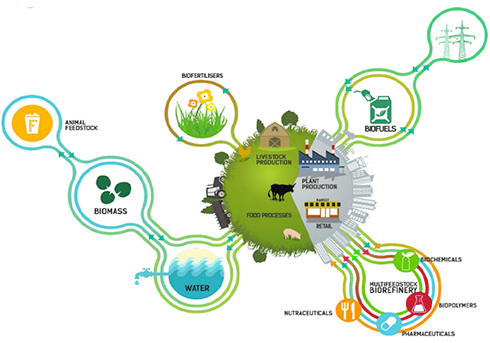Climate-Smart Livestock Breeding And Genetics
In today's rapidly changing world, it has become crucial to adapt our agricultural practices to mitigate the effects of climate change. One area that requires particular attention is livestock production. With the rising global temperatures and increasing frequency of extreme weather events, finding climate-smart solutions for livestock production has become more important than ever.
Livestock production plays a significant role in worldwide food security and rural livelihoods. However, it also contributes to greenhouse gas emissions and environmental degradation. To address these challenges, various initiatives have been developed over the years, including the concept of climate-smart livestock production.
What is climate-smart livestock production?
Climate-smart livestock production refers to a set of practices and strategies that aim to increase the resilience of livestock systems to climate change while reducing their impact on the environment. It involves the adoption of innovative technologies, improved animal management practices, and sustainable approaches to feed production. The goal is to enhance productivity, reduce emissions, and promote sustainable and resilient livelihoods for livestock producers.
Ideas for climate-smart livestock production
1. Efficient feed management:
Efficient feed management plays a crucial role in climate-smart livestock production. Livestock producers can optimize the use of feed resources by adopting techniques such as silage making, improved grazing management, and using locally available feed ingredients. This not only reduces the environmental impact of feed production but also improves the nutritional efficiency of livestock, leading to better productivity.
2. Genetic improvement:
Another important aspect of climate-smart livestock production is genetic improvement. Selective breeding for traits such as heat tolerance, disease resistance, and feed efficiency can help develop more resilient livestock breeds. This can enhance the adaptability of livestock to changing climatic conditions and reduce their susceptibility to diseases and pests.
3. Agroforestry integration:
Integrating agroforestry practices with livestock production can offer numerous benefits. Planting trees or establishing fodder banks not only provides shade and shelter for the animals but also offers a sustainable source of forage. The presence of trees also helps sequester carbon dioxide from the atmosphere, reducing greenhouse gas emissions.
4. Manure management:
Efficient management of livestock manure is essential for reducing its environmental impact. Practices such as composting, anaerobic digestion, and biogas production can help capture methane emissions and convert them into energy. This reduces the greenhouse gas emissions associated with manure and generates renewable energy for use on the farm.
5. Precision livestock farming:
Advancements in technology have enabled the development of precision livestock farming systems. These systems use sensors, data analytics, and automation to monitor and manage livestock production more efficiently. They can help optimize resource use, reduce environmental impact, and enhance animal welfare by providing real-time information on animal health, feed consumption, and environmental conditions.
Recommendations for implementing climate-smart livestock production
1. Enhancing knowledge and capacity:
Providing training and capacity-building opportunities to livestock producers and extension workers is crucial for the successful implementation of climate-smart livestock production practices. This can be done through workshops, demonstration farms, and farmer field schools where best practices are shared and new technologies are introduced.
2. Strengthening policy and institutional support:
Governments and agricultural institutions should support climate-smart livestock production through policy frameworks, financial incentives, and research and development efforts. This can encourage more farmers to adopt sustainable livestock practices and ensure the availability of necessary resources and infrastructure.
3. Promoting market linkages:
Creating market linkages for sustainably produced livestock products can provide economic incentives for farmers to adopt climate-smart practices. Consumers are increasingly demanding sustainably produced and environmentally friendly products, and linking producers with these markets can create new opportunities for income generation.
4. Collaboration and knowledge sharing:
Collaboration among different stakeholders, including farmers, researchers, policymakers, and civil society organizations, is essential for scaling up climate-smart livestock production. Knowledge sharing platforms, networks, and partnerships can facilitate the exchange of experiences, lessons learned, and innovative ideas.
Listicle of benefits of climate-smart livestock production:
- Improved resilience of livestock systems to climate change
- Reduced greenhouse gas emissions from livestock production
- Sustainable and resilient livelihoods for livestock producers
- Enhanced productivity and profitability
- Conservation of natural resources
- Better animal welfare and health
- Integration with agroforestry for multiple benefits
- Diversification of income sources
- Improved soil fertility through manure management
- Contribution to global food security
Question & Answer
Q: Why is climate-smart livestock production important?
A: Climate-smart livestock production is important because it allows us to address the challenges of climate change while ensuring food security and sustainable livelihoods for livestock producers. It helps reduce greenhouse gas emissions, protect natural resources, and enhance the resilience of livestock systems.
Q: How can livestock producers contribute to climate-smart practices?
A: Livestock producers can contribute to climate-smart practices by adopting sustainable animal management techniques, optimizing feed resources, implementing manure management strategies, and integrating with agroforestry systems. They can also collaborate with researchers, policymakers, and other stakeholders to share experiences and knowledge.
Summary of climate-smart livestock production
Climate-smart livestock production offers a promising way forward in the face of climate change. By implementing climate-smart practices, we can enhance the resilience of livestock systems, reduce greenhouse gas emissions, and promote sustainable and resilient livelihoods for livestock producers. Efforts are needed at various levels, including capacity building, policy support, and market development, to ensure the widespread adoption of these practices. With collective action and commitment, we can create a future where livestock production coexists harmoniously with the environment.
References:
[1] Climate-smart livestock production. (n.d.). Retrieved from https:\/\/elearning.fao.org\/pluginfile.php\/506759\/course\/overviewfiles\/Climate-smart-livestock-production.jpg




Post a Comment for "Climate-Smart Livestock Breeding And Genetics"